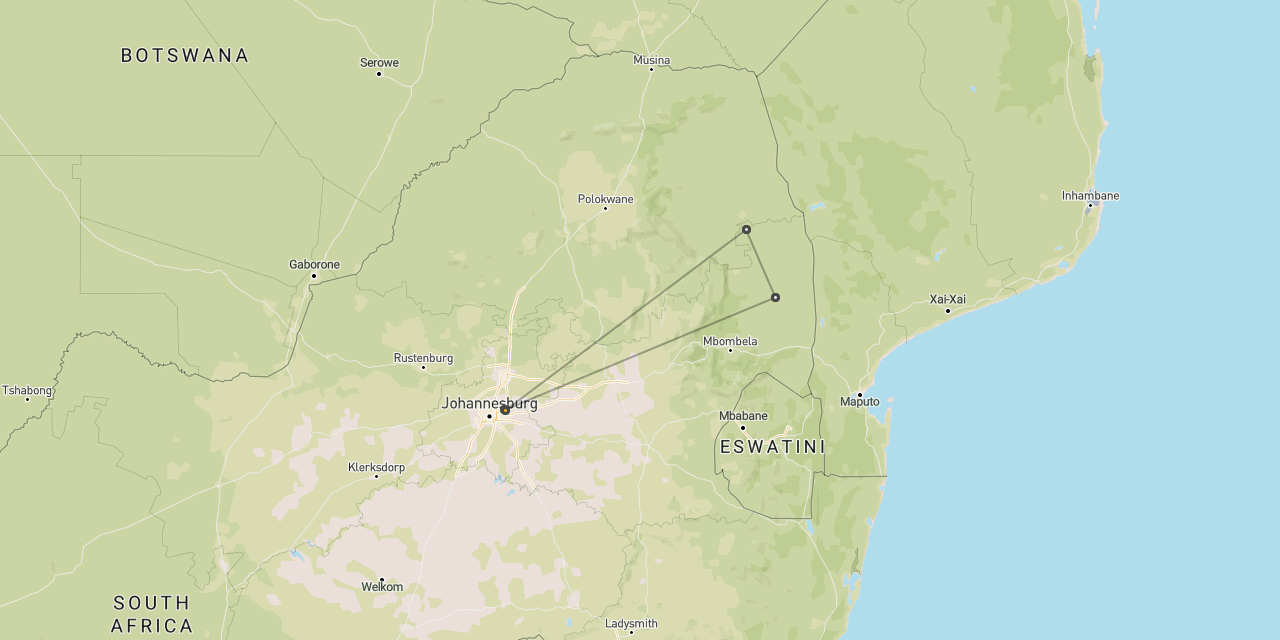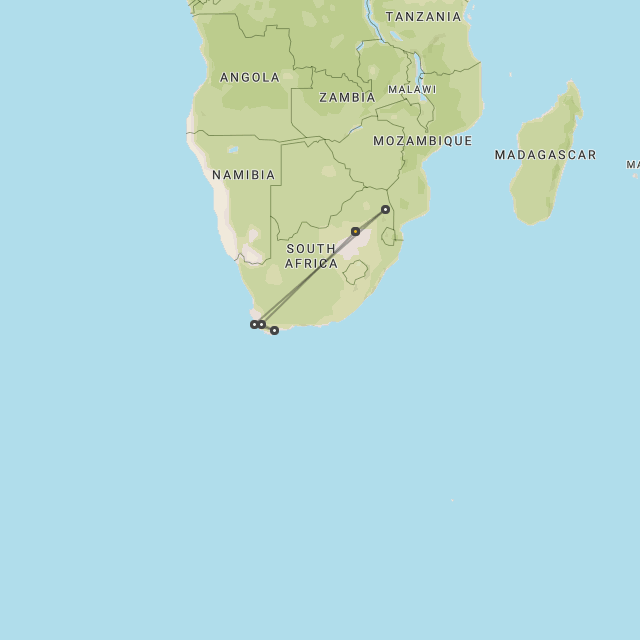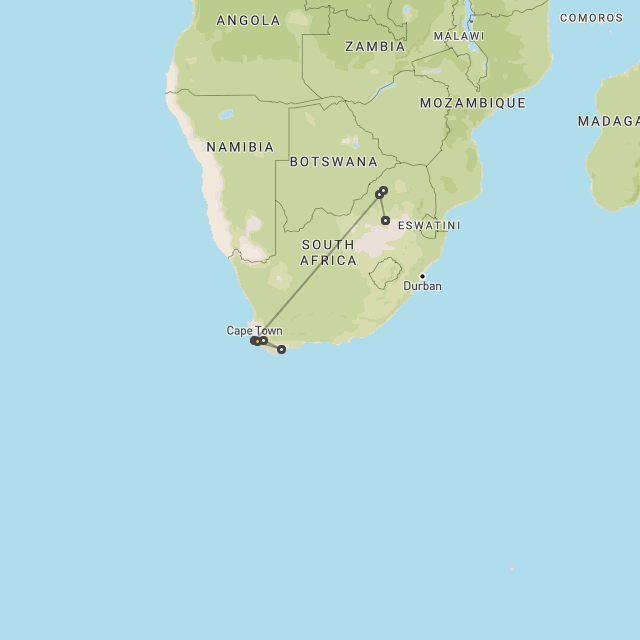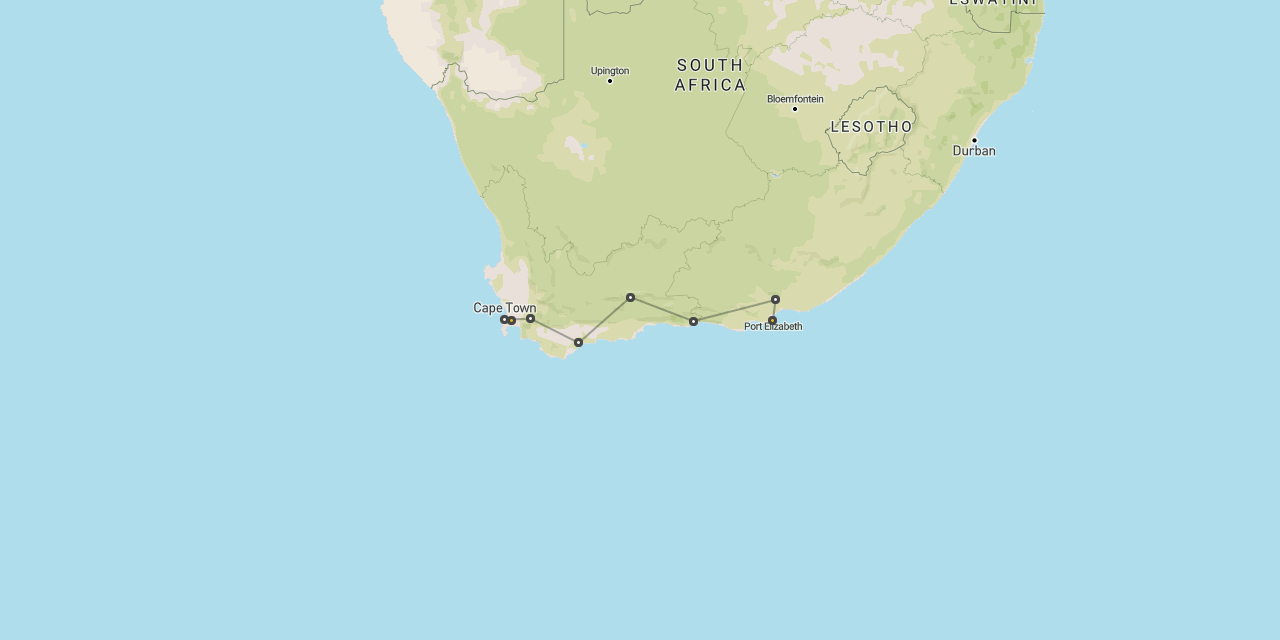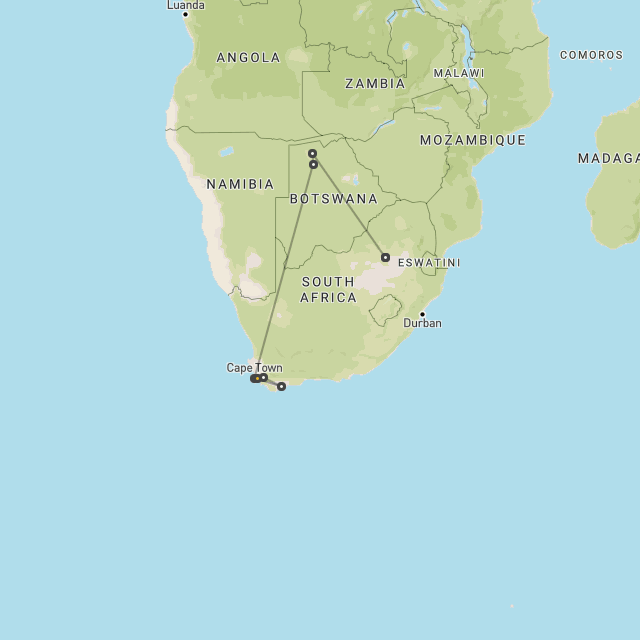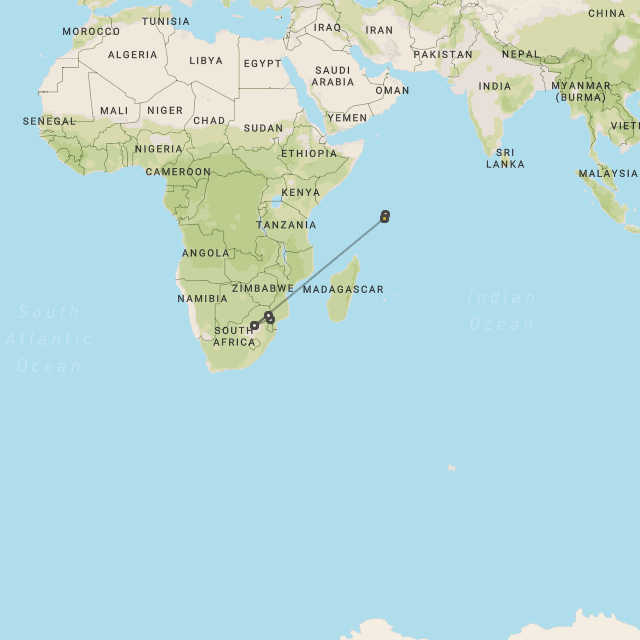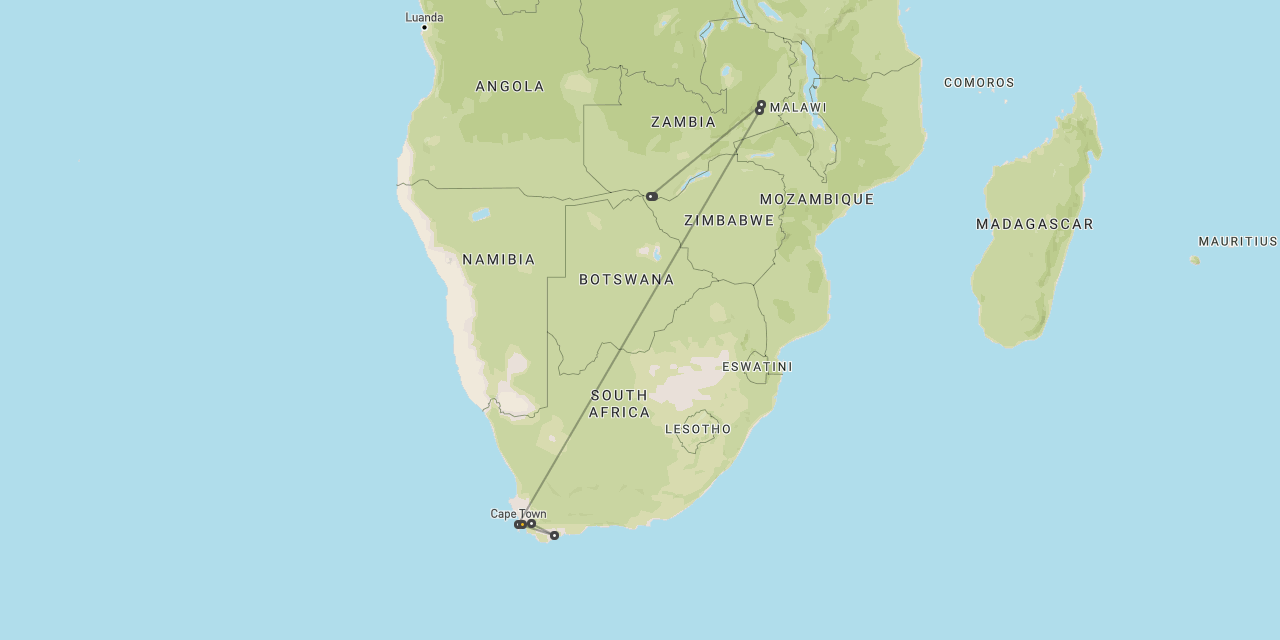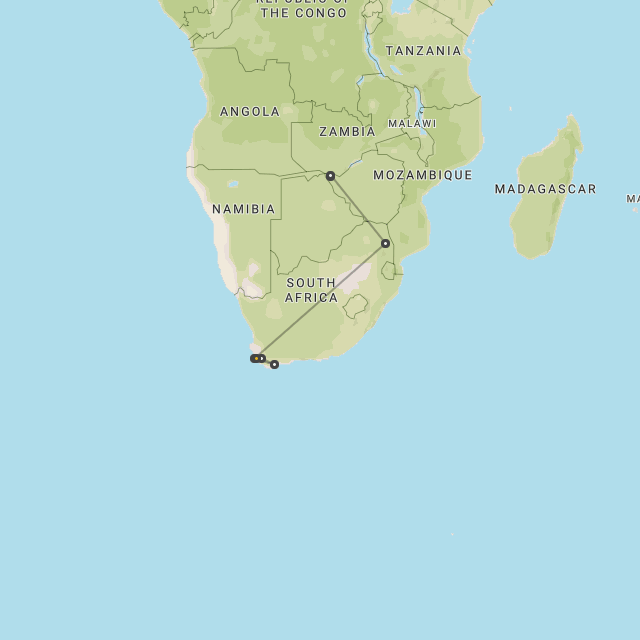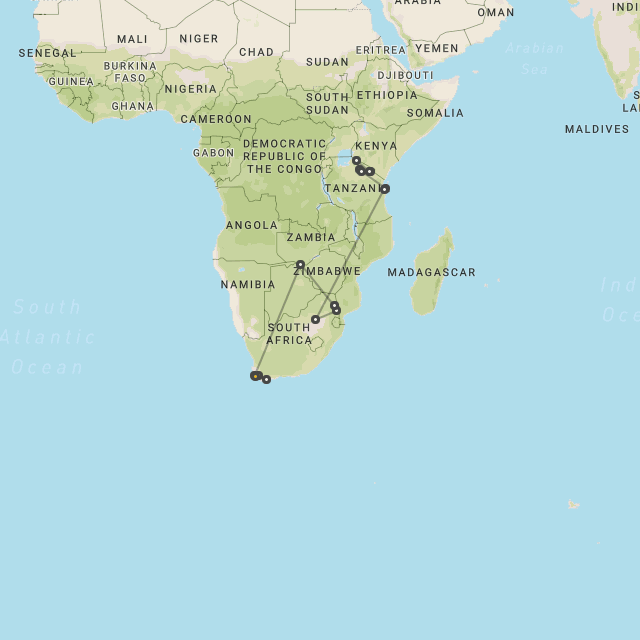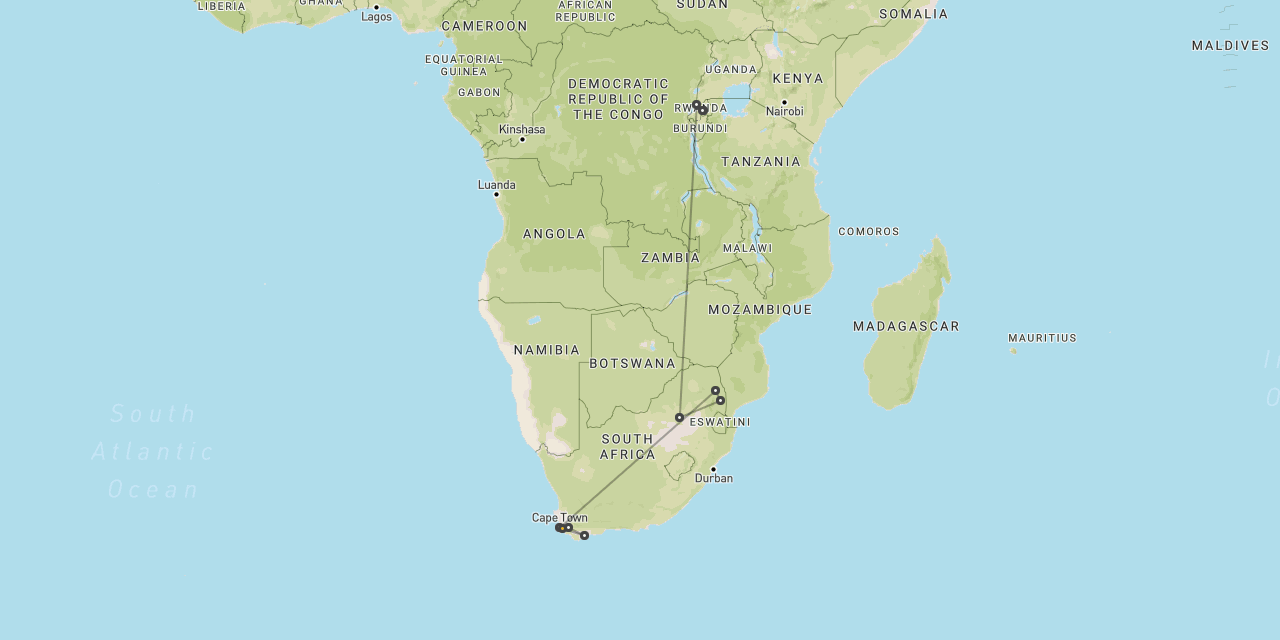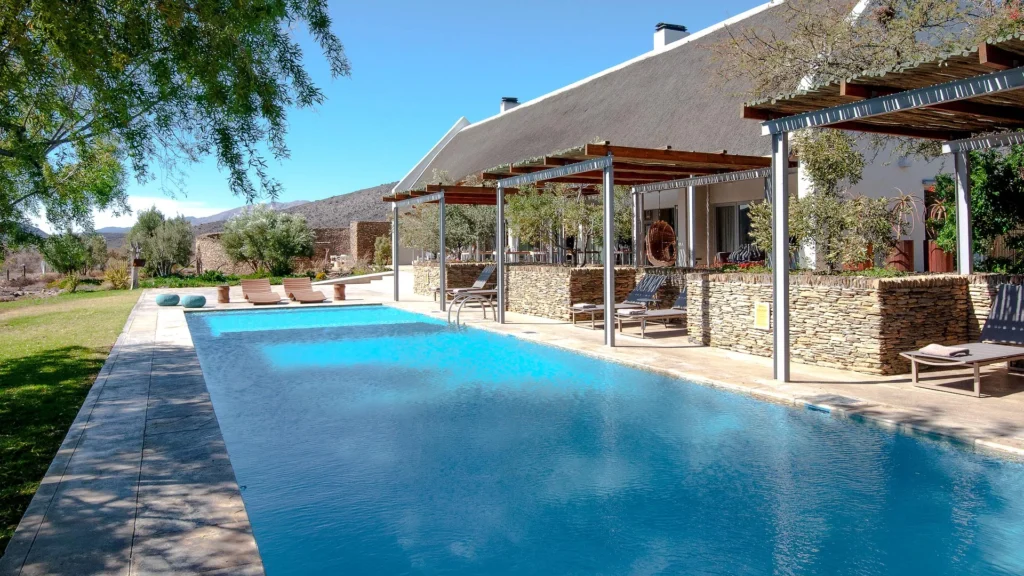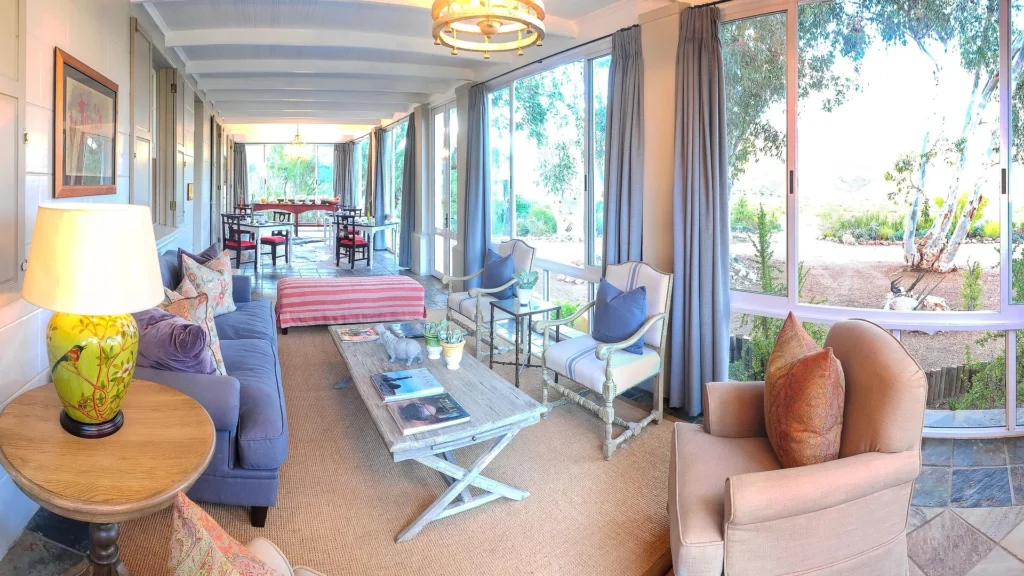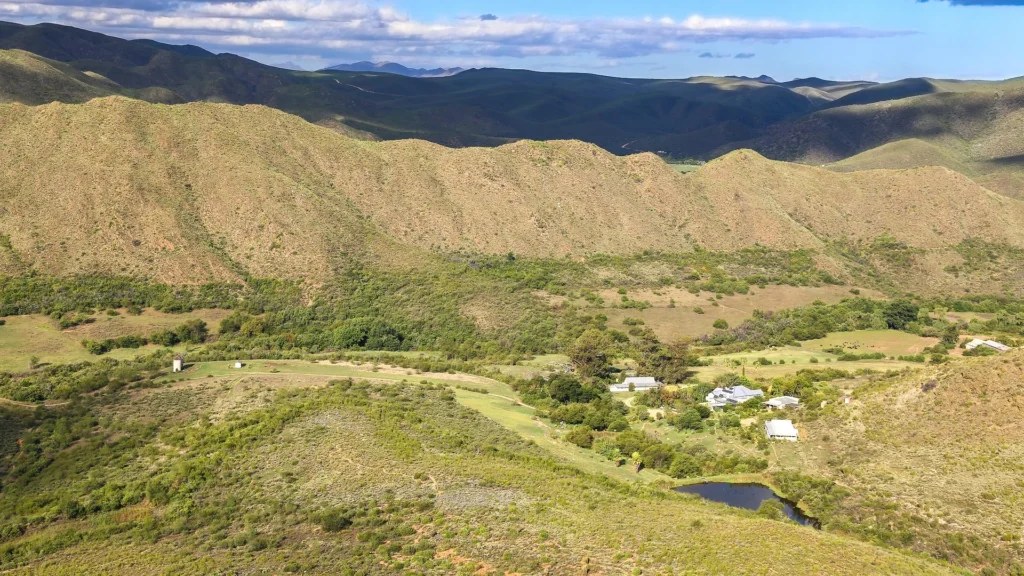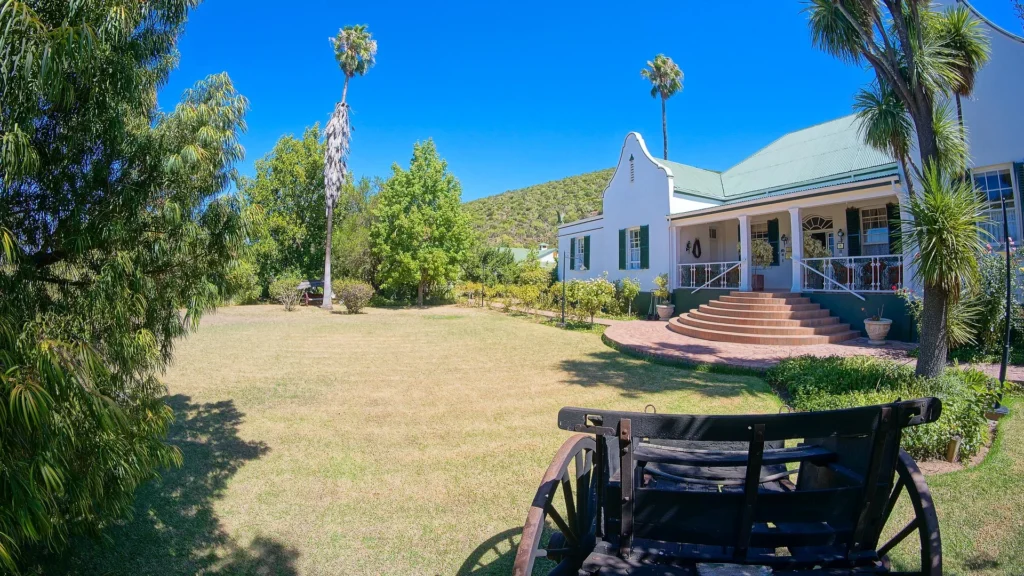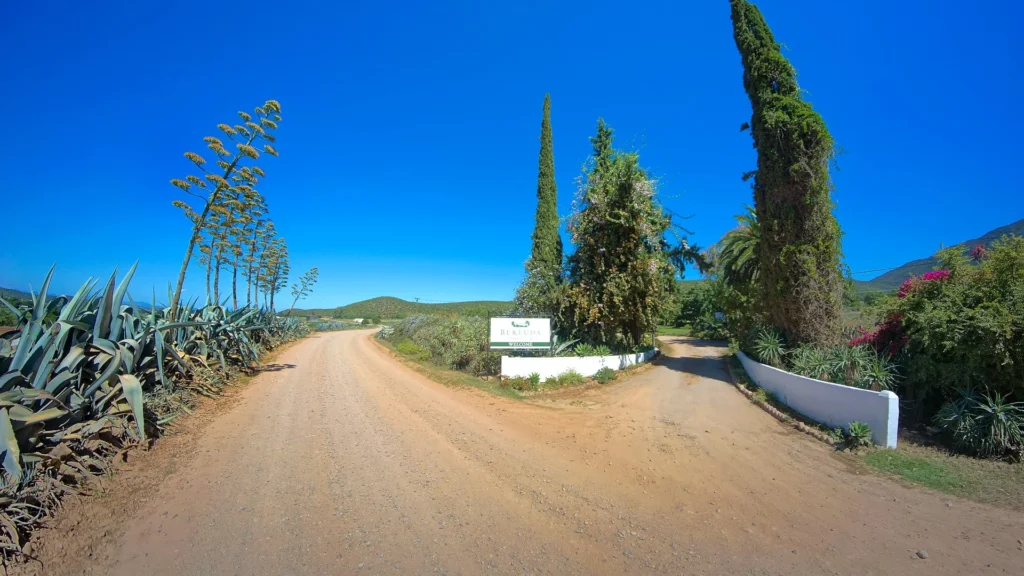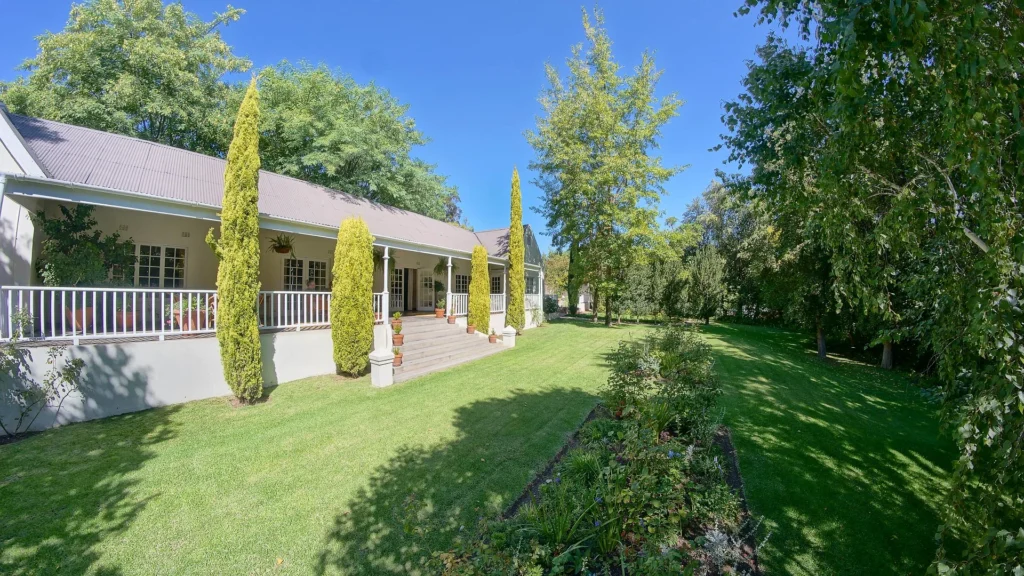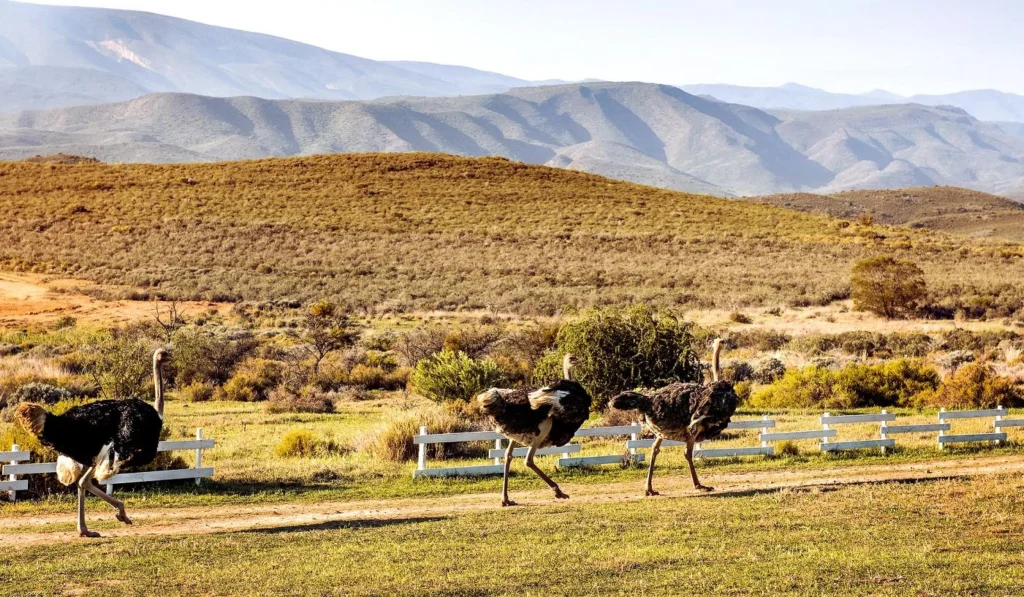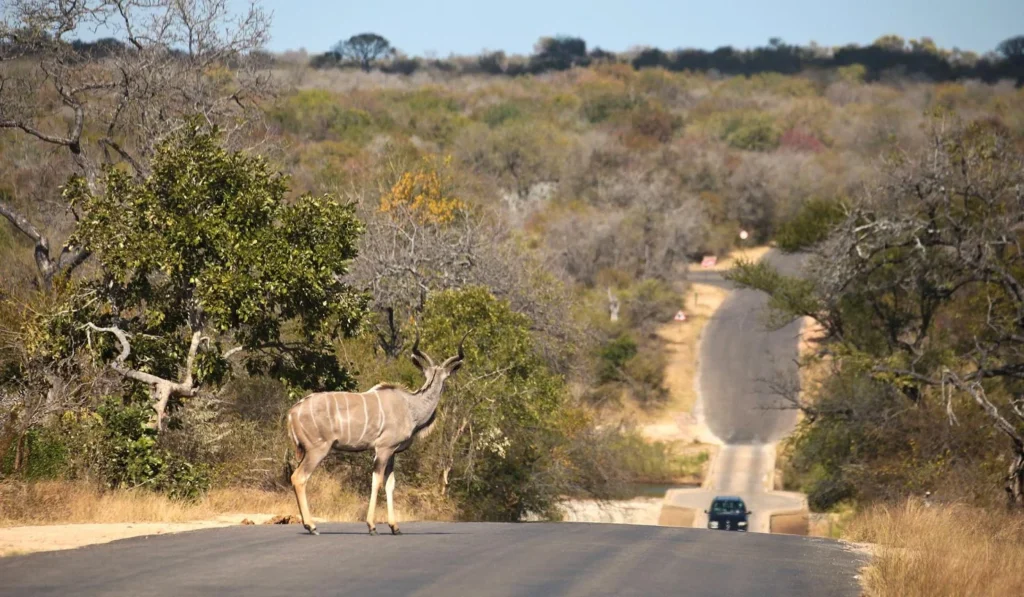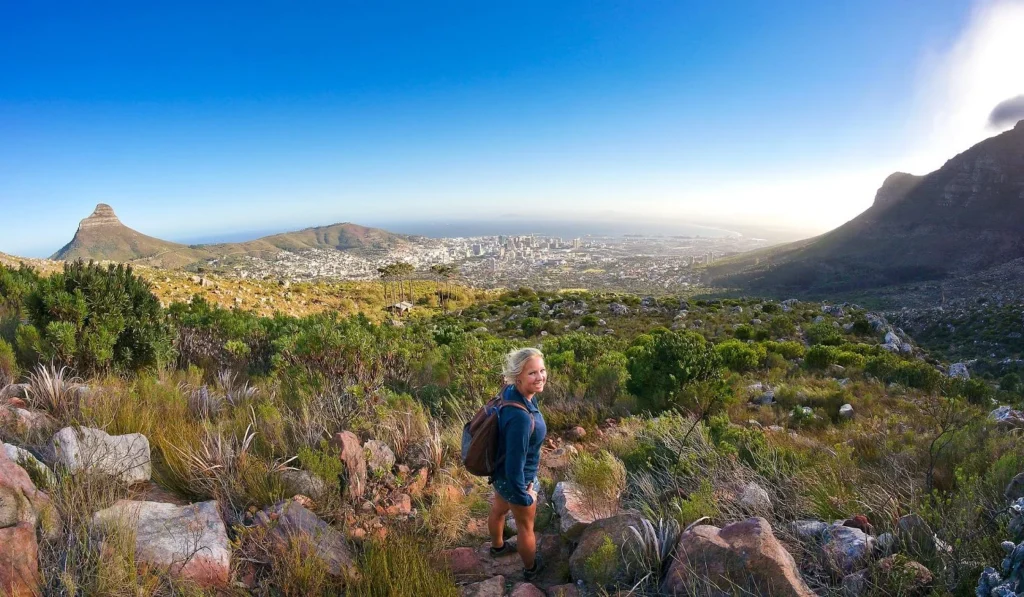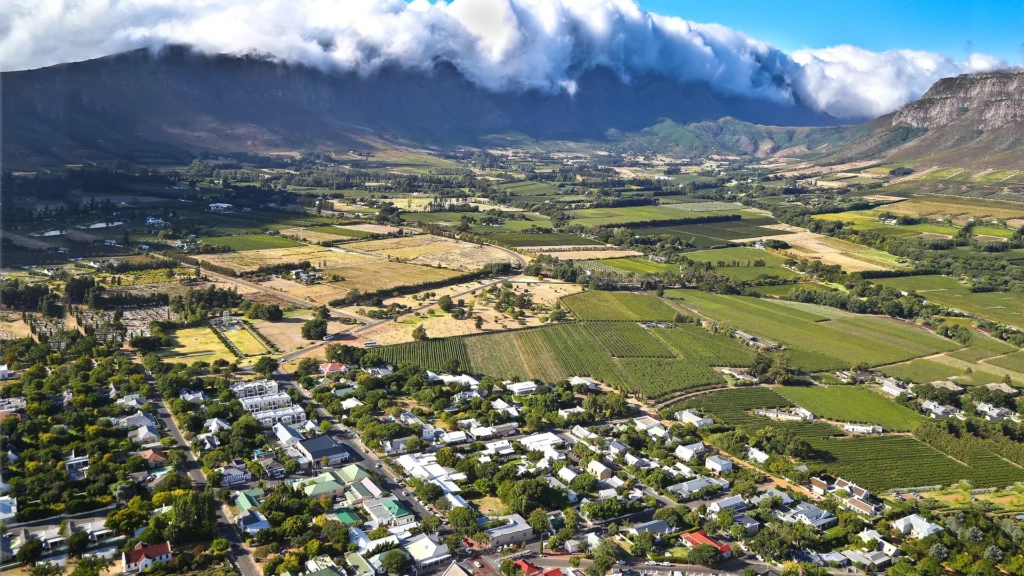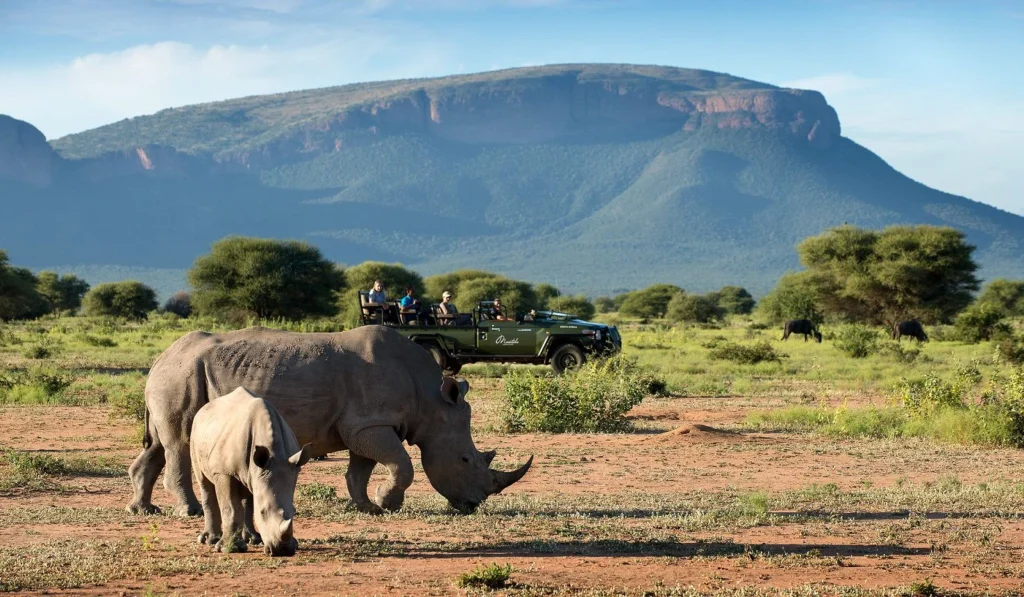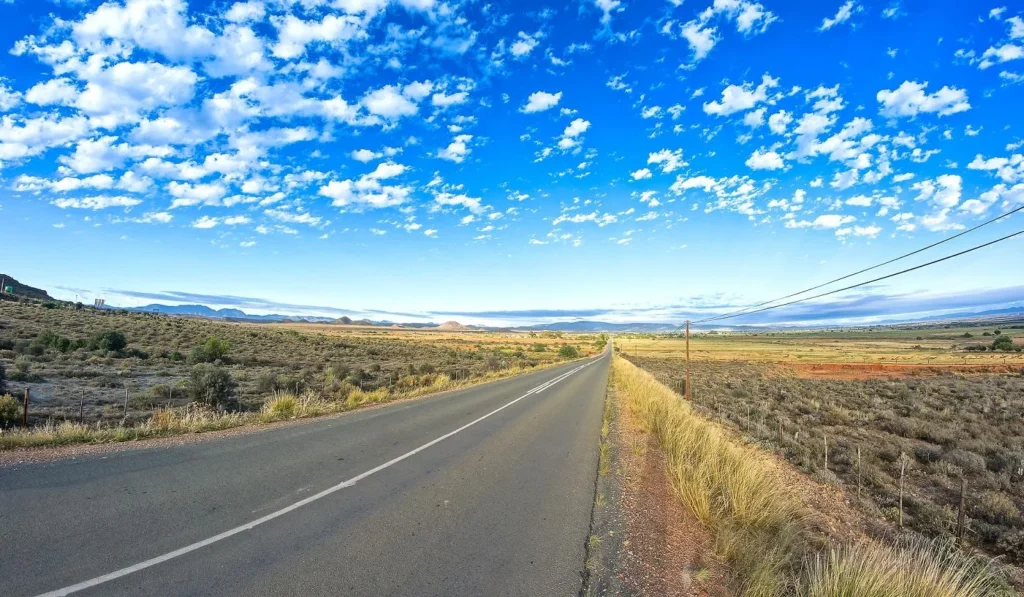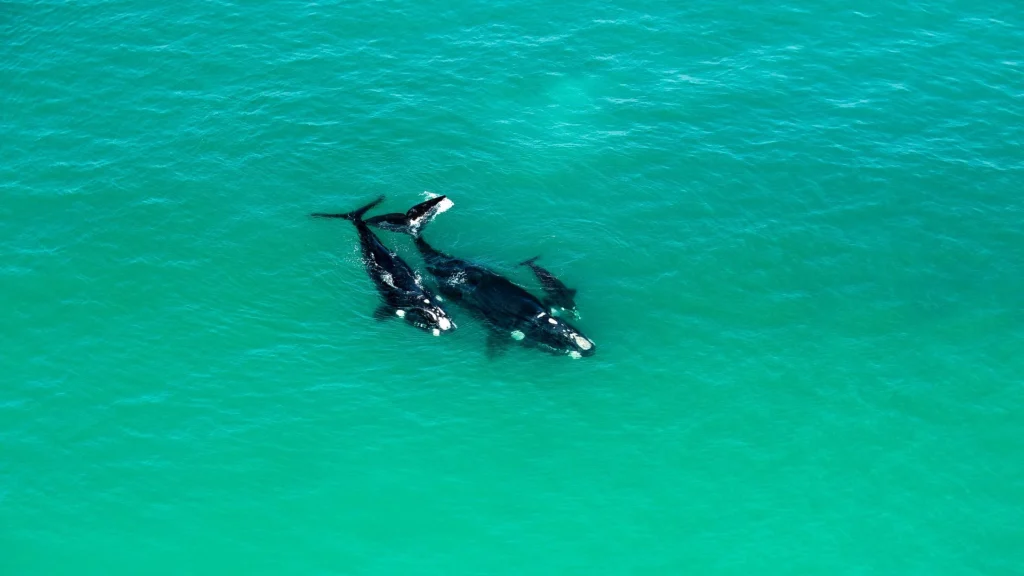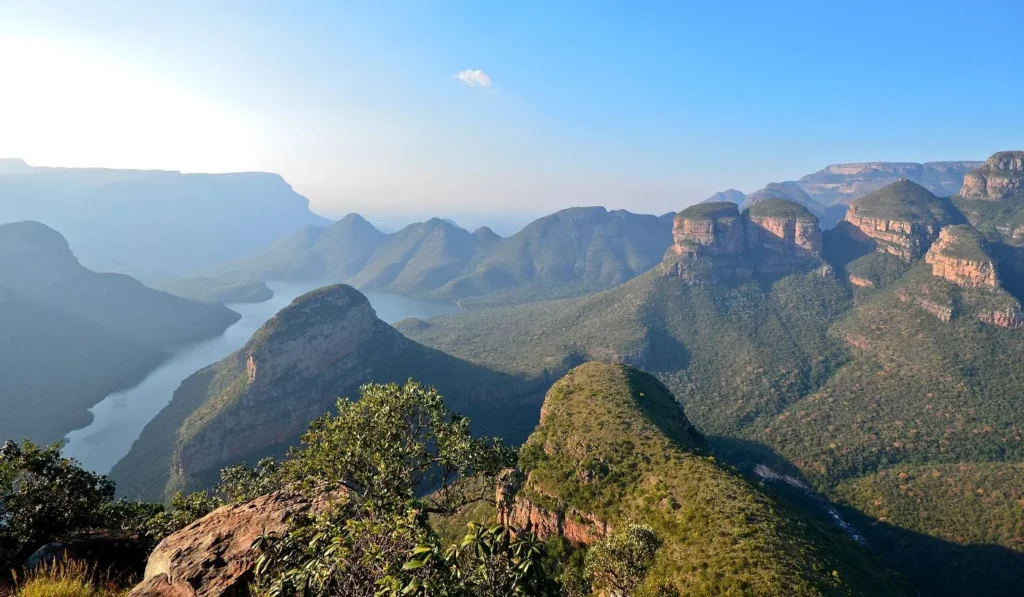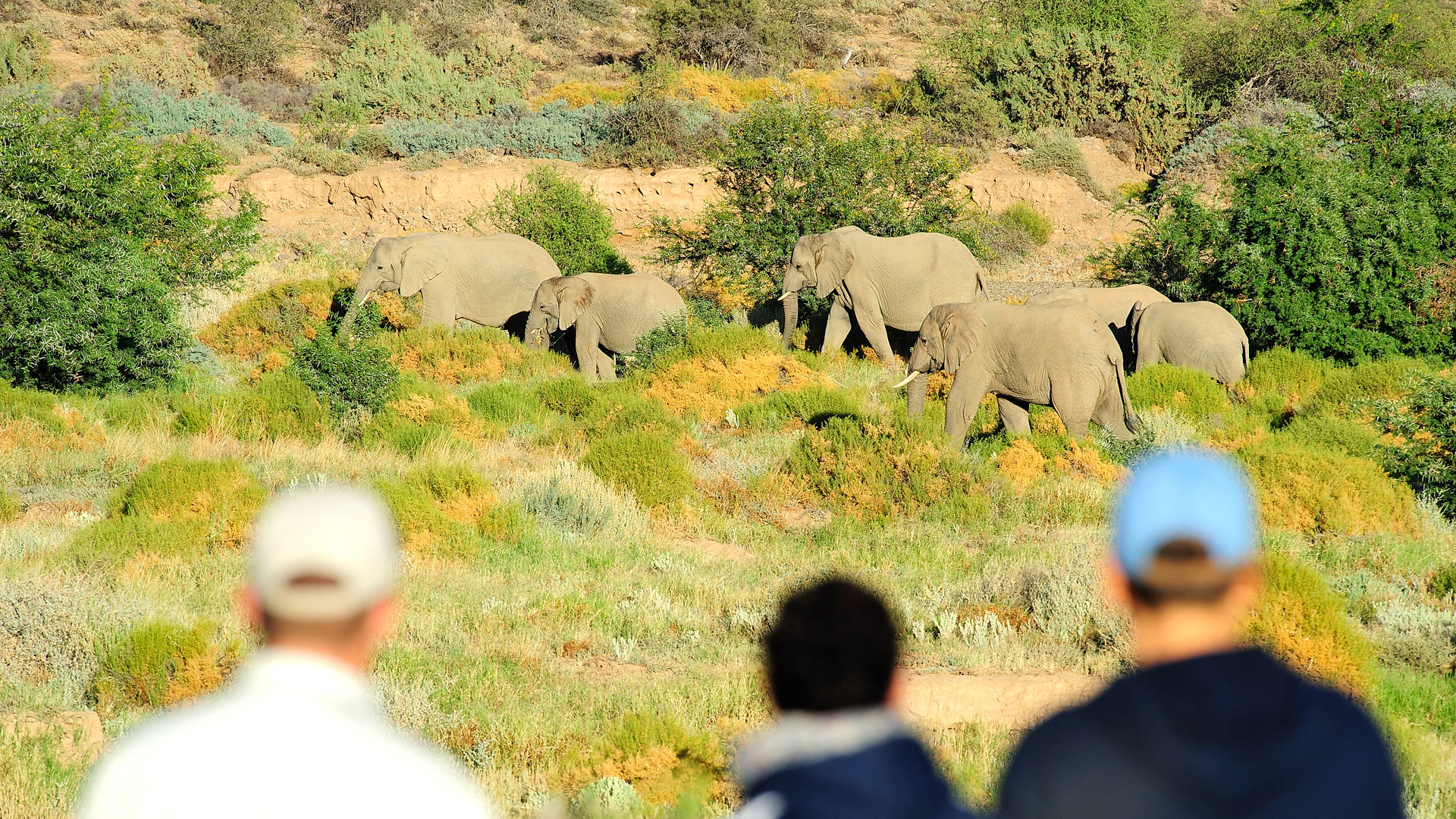
Safari to Sanbona
Sanbona
is the best wildlife reserve
in the Western Cape
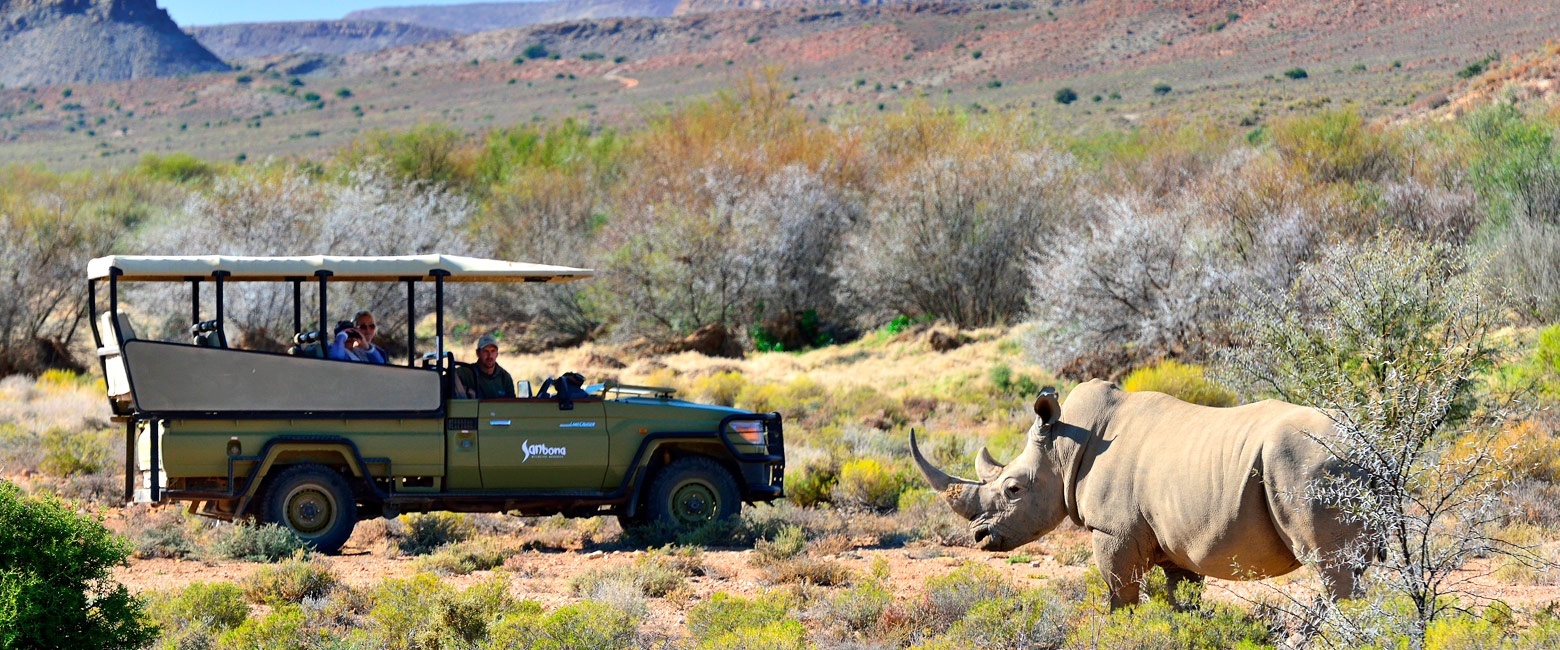
a really impressive conservation project
At 540 square kilometres, Sanbona Wildlife Reserve is a relatively large conservation area, certainly by the standards of the Western Cape.
Sanbona definitely represents by far the best ‘safari’ location within easy driving distance from Cape Town, with almost a full range of animals and a good range of activities.
Having said that, it’s important to appreciate that this relatively small and fully fenced reserve should not be compared with the truly wild safari areas further north on the continent.
The Sanbona area contains a handful of relatively upmarket lodges, which can easily be built into self-drive trips around this region, or accessed by road or helicopter transfers from Cape Town and the Cape Winelands.
Geography
Set in the Little Karoo, north of the towns of Barrydale and Montagu, the Sanbona area contains semi-desert landscapes typical of the region, with the stark granite Cape Fold Mountains dropping down to a network of rocky hills and wide open plains covered in light scrub fynbos.
Water is the key to life out here and the reserve is centred on the large Bellair Dam which was actually constructed by German and Italian prisoners during the First World War to capture the unreliable flow of the ephemeral mountain streams.
Central to Sanbona is a broad valley which runs eastward from the dam and clearly has some significant groundwater, since its floor is covered with unusually dense vegetation, the source of grazing for the majority of residents.
History
Starting way back in the mists of time, this area was home to ancient creatures whose remains became encapsulated in the rocks. The reserve contains some interesting fossil beds, most notably with a good selection of trilobites.
During more recent millennia the area was inhabited by the San Bushmen, after whom the reserve was named, the word ‘bona’ meaning ‘vision’ in the ancient tongue. There are some interesting rock-art sites up in the hills of the reserve which date back a remarkable 3500 years and are really worth exploring.
Sanbona only came into existence in 1998, initially as a 270 square kilometre area along the seasonal Kalkoenshoek River.
In 2002 this area was extended to its present size, connecting it to the Warmwaterberg Forest Reserve and extending out towards the Anysberg Nature Reserve. In order to achieve this it was necessary to acquire a total of nineteen farmsteads, which were previously utilised for wheat and lucerne crops, domestic animal production (cattle, sheep and goats), and game farming.
A huge effort was put into restoring the land to as close to its natural state as was reasonably possible and encircling the whole with an electric elephant fence.
The three main lodges were constructed between 2002 and 2009, when the eco-tourism project really started in earnest.
In 2015 Sanbona was purchased by the Caleo Foundation, a non-profit, conservation organisation, which is building on the foundations of previous owners to deliver an increasingly important and prestigious reserve.
Flora
A visit to Sanbona, like any desert environment, tends to inspire guests to take an interest in the finer details.
The vegetation of Sanbona consists of three biomes, fynbos, succulent Karoo and thicket, of which the first two are globally recognised ‘biodiversity hotspots’ due to their incredible levels of endemism.
The Warmwaterberg Mountain Range comprises the oldest geological formation on Sanbona and is part of the Table Mountain Group, composed of sedimentary rock that breaks down into the acidic, nutrient poor soils upon which the fynbos plants thrive.
The remainder of the reserve comprises mudstones and siltstones of the Bokkeveld and Witteberg Formations that form nutrient rich, clay soils derived from shales.
Areas of mudstone which lie in the shadow of the Warmwaterberg receive higher rainfall and are able to support the critically endangered renosterveld fynbos.
Further north the average rainfall drops dramatically and the vegetation shifts to the more arid vegetation of the succulent Karoo biome, again with a lot of unique and fascinating species, some with rather attractive names like Baby’s Bottom, Ostrich Toe and Pig’s Ear.
Arid mosaic thicket occurs in patches throughout the reserve, but tends to be of lesser interest.
Over 250 years of agriculture had a severe impact on these delicate ecosystems and a great deal of effort is being put in to protect and restore them, including combating soil erosion, halting the spread of alien invasive vegetation and managing the impact on vegetation by wildlife. As of 2018 around 18% of the land was in its pristine natural state, 55% moderately degraded and 27% significantly degraded.
In a semi-arid environment such as Sanbona, this is slow work and will take decades if not centuries to complete.
Wildlife
Although the reserve is unusually large for this part of the world, these arid landscapes are not naturally able to carry high densities of large animals.
Almost all of the wildlife on the reserve has been reintroduced. Great care has been taken to check historical records to ensure that only previously indigenous species are included and an enormous amount of continuous monitoring is needed to ensure a suitable balance between predator, prey and plant species.
Animal highlights include lions, cheetahs, leopards, caracals, brown hyenas, elephants, white rhinos, buffaloes, zebras, giraffes and springboks, but in all cases the numbers are low.
We are unsure of the actual numbers, but we would be surprised if there are more than half a dozen of each of the main predators, otherwise they would eat everything in the reserve in a matter of weeks.
Other species include oryx, hartebeests, elands, kudus, jackals, duikers, aardwolves, aardvarks, grey rheboks, steenboks, klipspringers and grysboks.
Inevitably the reserve is fully fenced, this part of the world is way too developed to be releasing lions left, right and centre, local farmers might have something to say about that!
The riverine rabbit
A number of flora and fauna species that occur on Sanbona are of Conservation Concern, as described in the IUCN (International Union for the Conservation of Nature) Red List of Threatened Species.
One important species demanding attention is the riverine rabbit, the 13th most endangered mammal in the world. Sanbona is a rare stronghold for these little fellows and the team here continually monitors the population and shares information with Cape Nature and the Endangered Wildlife Trust.
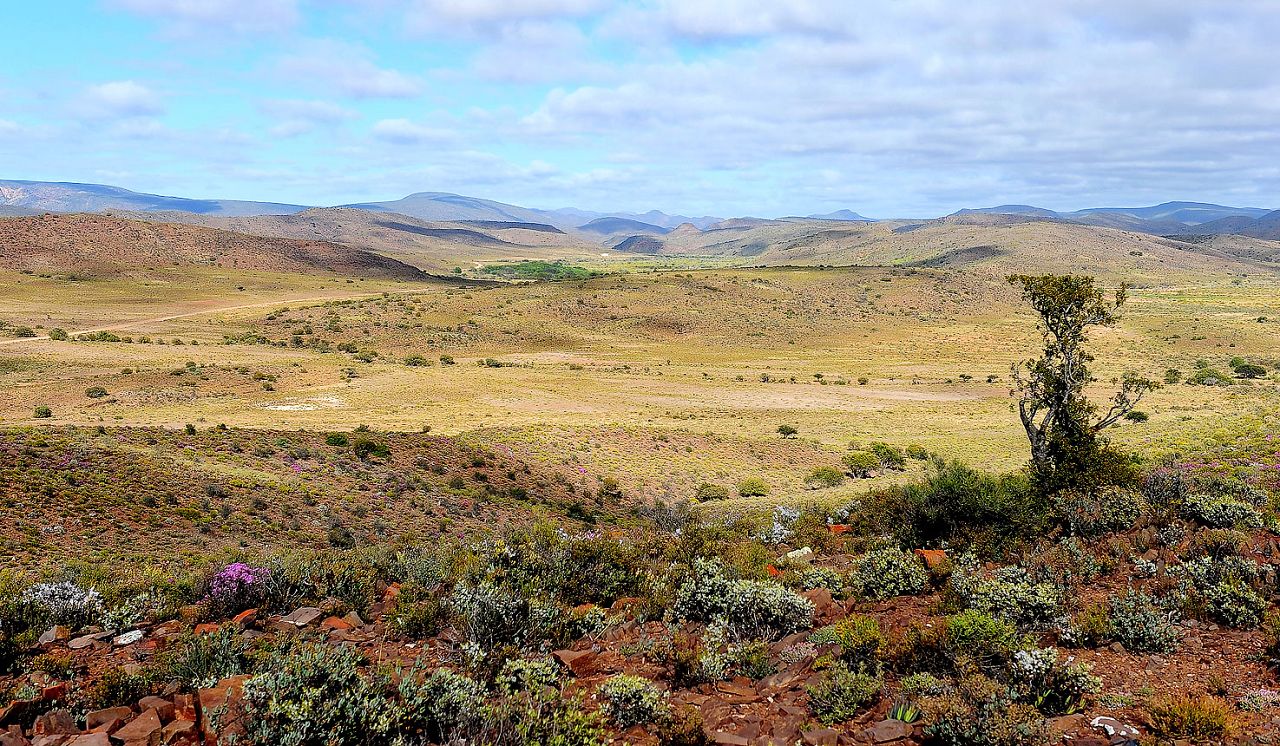
Gallery
Map
If you were hoping to experience a proper safari in the greater Cape Town area, then you will be disappointed, since all the serious options start about 1000 km (600 miles) away. The best you can hope for around here are lovely landscapes and a taste of safari.
If you are planning a self-drive around the Western Cape, then Sabona is the only decent safari option. It really is surprisingly pleasant, as good as the options in the Eastern Cape. But it’s not the Kruger.
The usual stay duration is 2-3 nights.
Getting there
Sanbona usually slides into a self-drive exploration between Franschhoek or Montagu and Calitzdorp or Oudtshoorn.
It is possible to drive out here direct from Cape Town, or even to charter a helicopter.
Where to stay
There are four accommodation options in Sanbona, all of which are owned and operated by the reserve itself.
The most authentic safari experience is clearly the very simple and outdoorsy Sanbona Explorer Camp. The most authentic of the more substantial properties is Sanbona Dwyka Lodge, whilst Sanbona Gondwana Lodge is a more substantial property designed to cater to families with children.
driving through the Little Karoo
let us know your thoughts about South Africa
and we will help you create the perfect safari
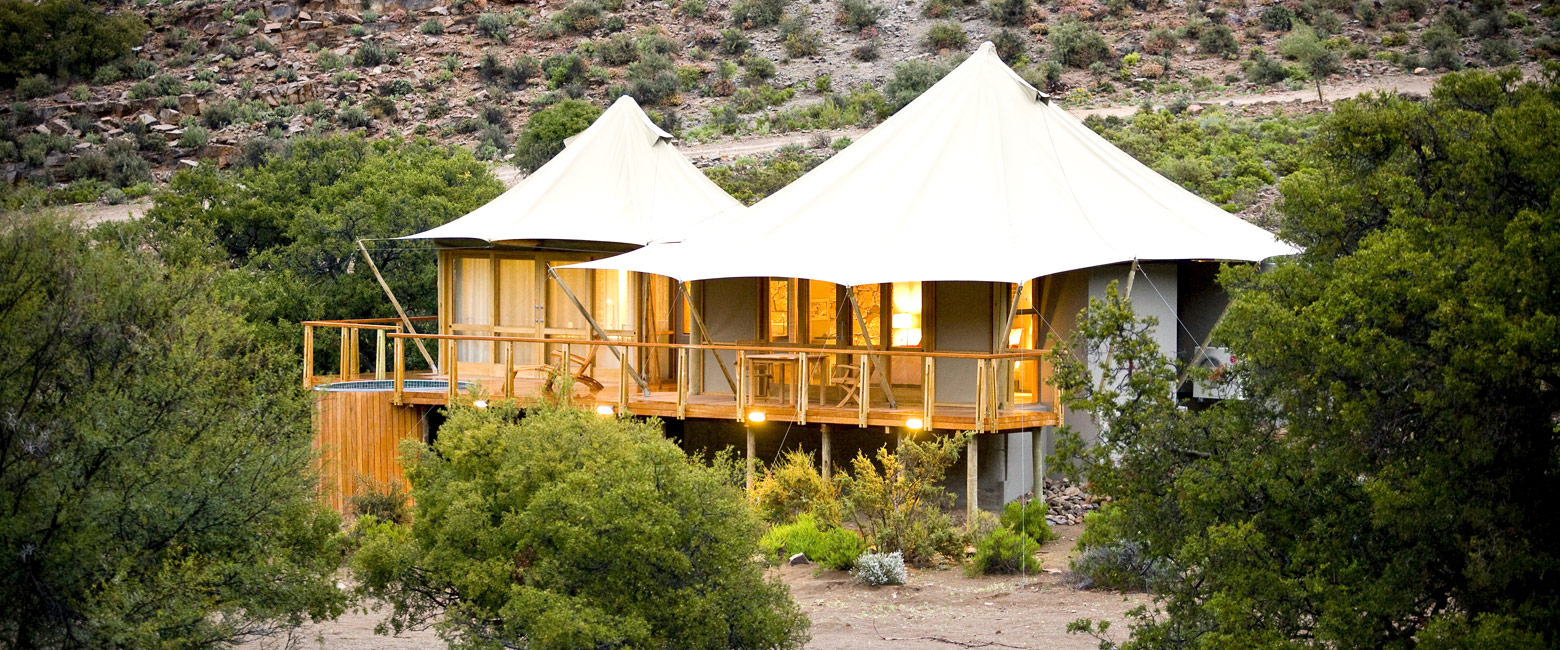
Extraordinary tailor-made adventures,
from earthy and edgy to easy and extravagant
From around USD 2500 per person, you set the ceiling
Sample Trips
Here are some of our popular trip shapes
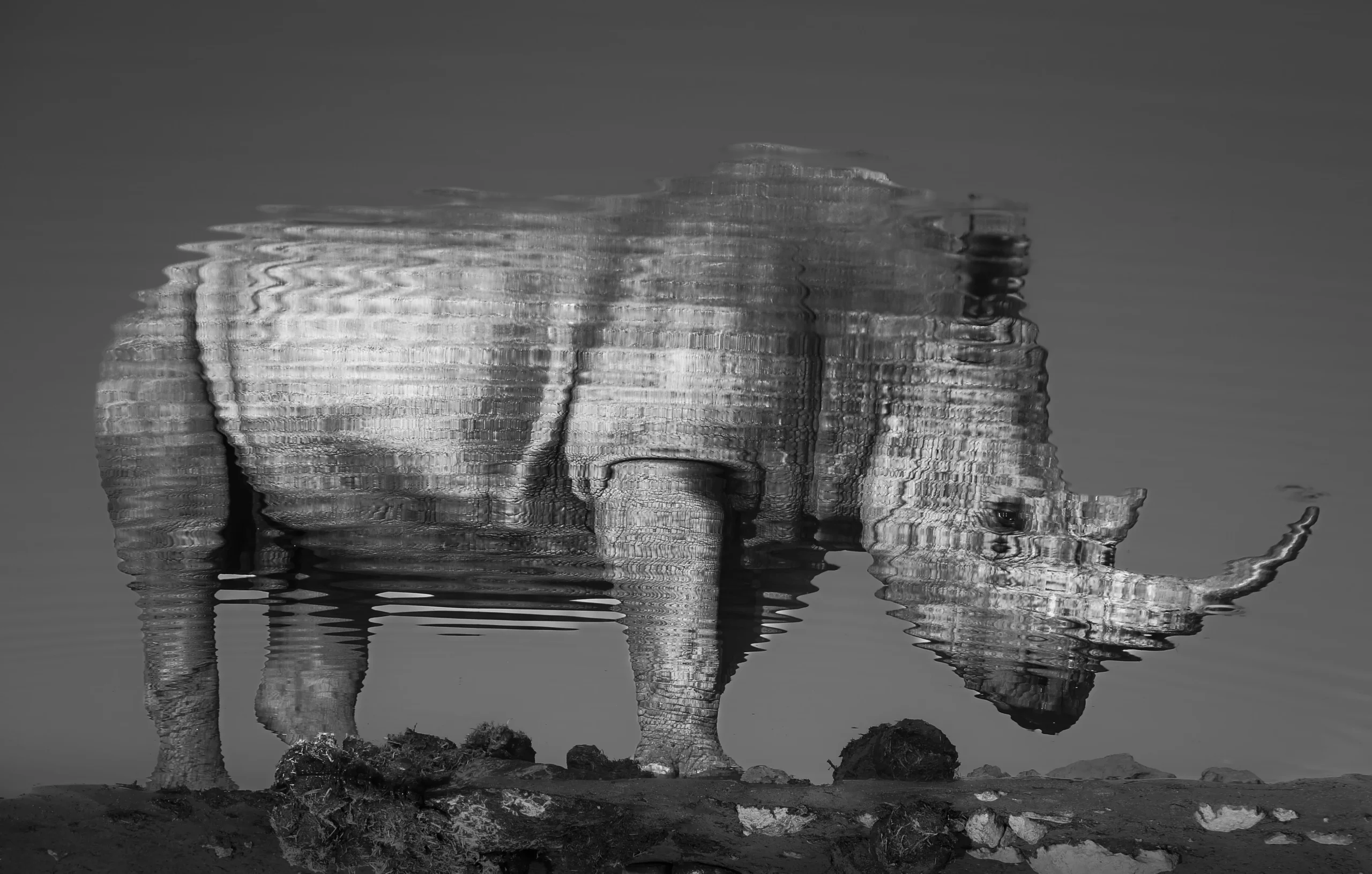
Get started on your trip
It’s never too soon to get in touch, we are here to help with every stage of your planning.
Best Lodges
We regularly inspect and photograph all of the the best lodges, to ensure that we always recommend the most suitable options
Key Locations
Take a look around related locations. Click ‘View more’ to explore locations further afield.
Where Next?
Where Next?
We offer trips to dozens of fabulous countries.
Might one of these might be your next great adventure?
Please rotate your screen.










